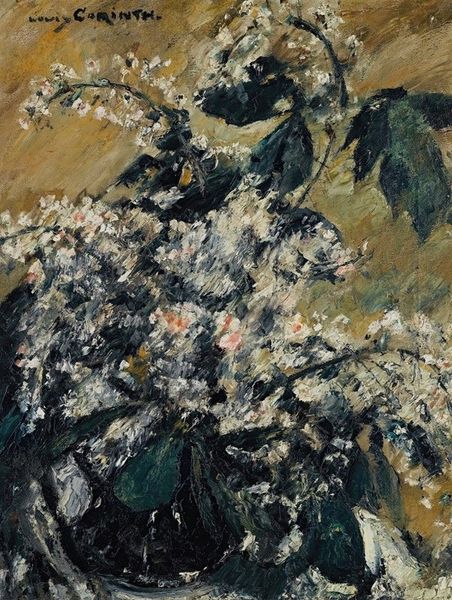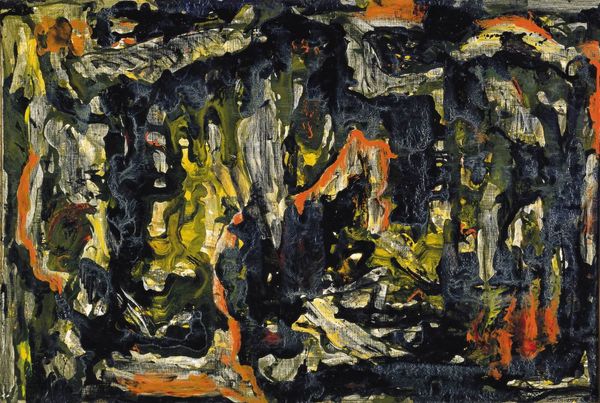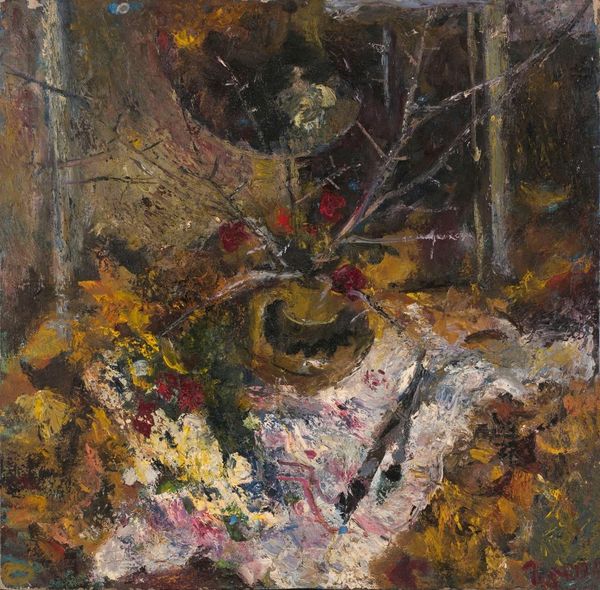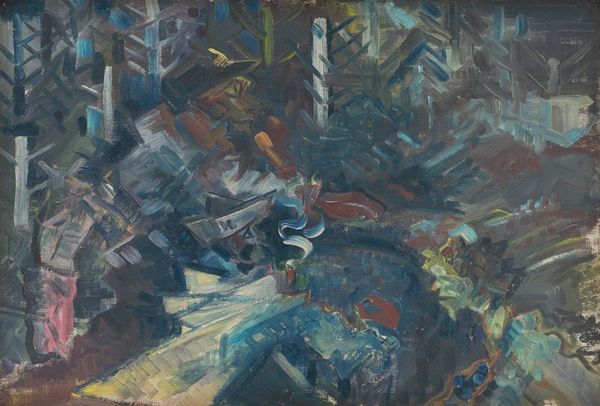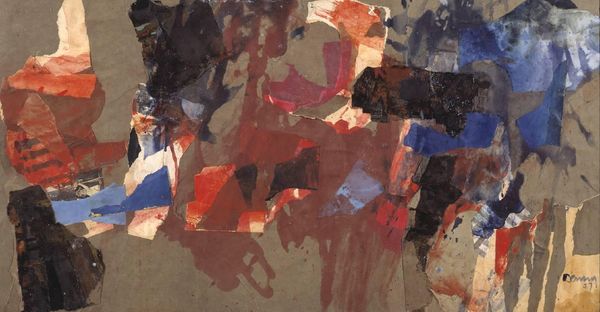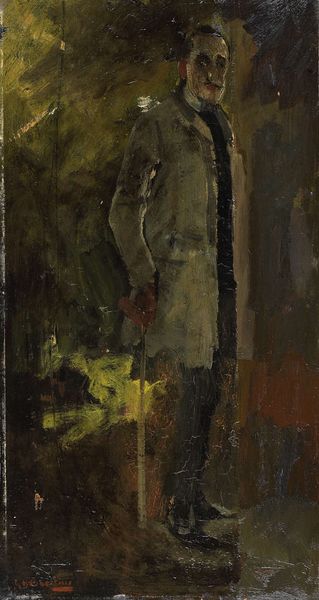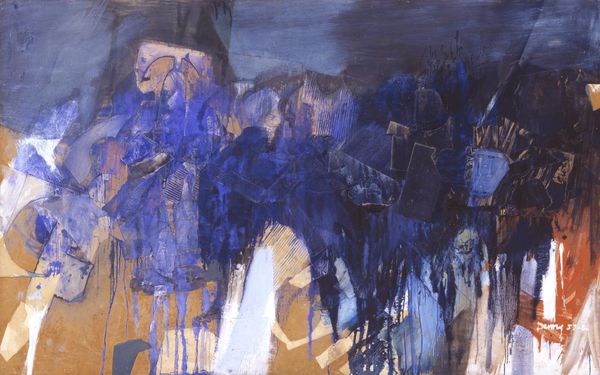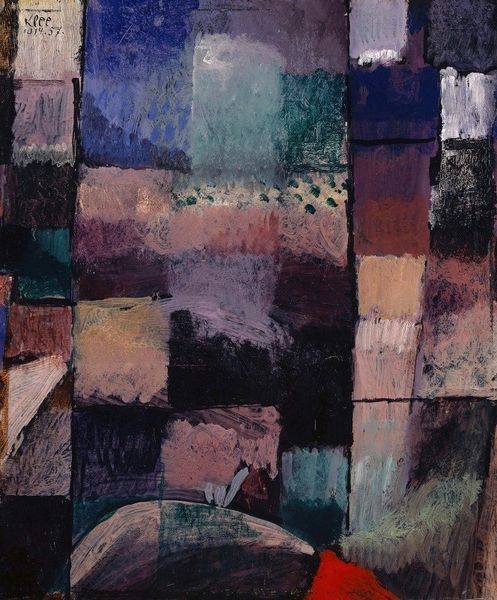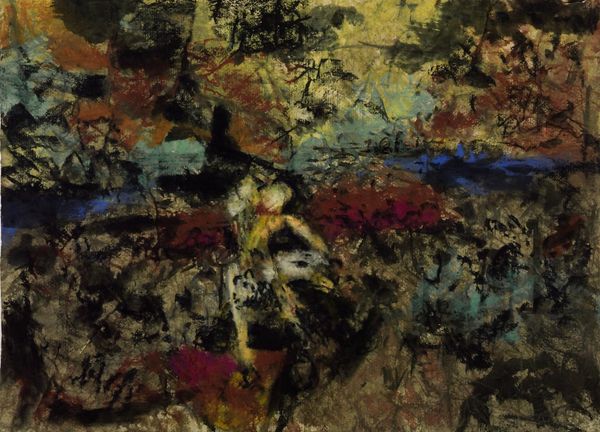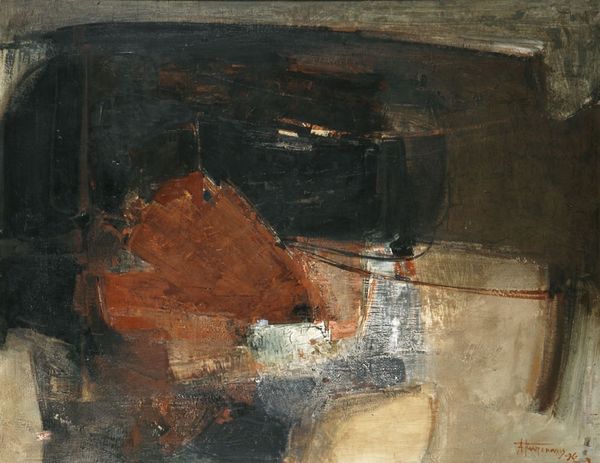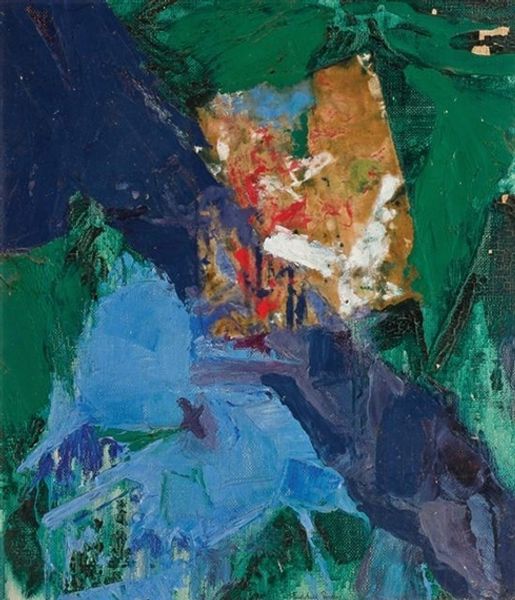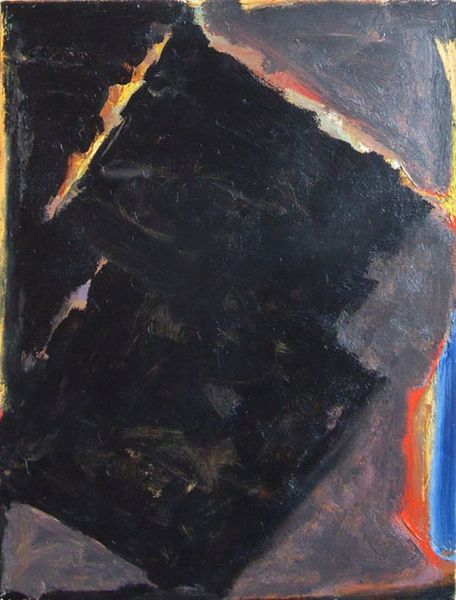
Copyright: Avigdor Arikha,Fair Use
Editor: We’re looking at Avigdor Arikha's "Abstract Composition," painted in 1958. It seems to be rendered in oil, primarily in deep, moody blacks and blues. It feels chaotic, yet contained. What do you see in this piece? Curator: Chaotic is a perfect word, don’t you think? It reminds me of standing at the edge of a storm. The way he builds up those thick layers of paint, it’s like the world is being born anew with every stroke. But I also see a glimmer of hope there, spots of iridescent purples and yellows trying to break through. Does that resonate with you? Editor: I do see those spots of colour now that you point them out. It almost feels like there’s a struggle for light. It is quite an evocative contrast within the blackness. But is there more to this, perhaps culturally? Curator: Absolutely! Consider the historical backdrop: The late 50s were rife with existential angst after WWII. Abstract Expressionism became this raw outpouring of emotion, a way to grapple with uncertainty. Arikha, in particular, having witnessed so much darkness in his own life, channeled that into his art. You sense that weight, don’t you? The beautiful horror of existence laid bare for us. Editor: That adds another layer for sure. I suppose understanding that time is key to interpreting it. So, it's not *just* chaos but a response to specific chaos. I never really thought of art as reflecting its time so profoundly. Curator: It's more than reflecting; it's wrestling. Arikha took the darkness and transformed it into something powerful and resonant. Editor: It's much more interesting when you know the story behind it, that's for sure! Thank you for unveiling some of the magic. Curator: The pleasure was all mine! Always lovely to find the magic together.
Comments
No comments
Be the first to comment and join the conversation on the ultimate creative platform.
